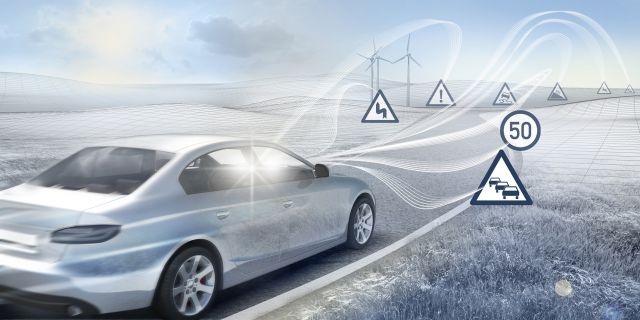 Bosch is working with TomTom to create maps for autonomous cars. – AFP Relaxnews pic, December 28, 2015.Tesla may have pushed out the ability to abdicate driving responsibility while highway cruising via little more than an over-the-air software update and Audi is currently prepping a sedan to dazzle the crowds at the International CES this January with its autonomous capabilities.
Bosch is working with TomTom to create maps for autonomous cars. – AFP Relaxnews pic, December 28, 2015.Tesla may have pushed out the ability to abdicate driving responsibility while highway cruising via little more than an over-the-air software update and Audi is currently prepping a sedan to dazzle the crowds at the International CES this January with its autonomous capabilities.
But one thing is clear, 2016 will not be the year that self-driving cars become a real-world reality.
In fact, according to Bosch, we are still a decade away.
"Automated driving will come step by step," begins Gerhard Steiger, president of the Bosch Chassis Systems Control division.
Cars will go from being able to change lanes unaided to avoiding obstacles and by 2020 they will be able to cope with navigating the highway.
However, "fully automated driving will not be ready before 2025," says Steiger.
One of the reasons why the demonstrations of technology have been so impressive yet still seem to be at the conceptual stage is testing.
"Using current methods, a highway pilot has to complete several million kilometres' worth of testing before it can be released for production."
Finding real-world situations to do this testing can also be extremely challenging beyond the US.
As well as dedicated test facilities, a number of states can license car companies to develop their autonomous tech on the road.
It is how Google has managed to clock up over a million test miles and why both Ford and Kia in December secured licences in California and Nevada respectively.
And it is for this reason that 2016 could still be a watershed year for autonomous driving as in April, the 1968 Vienna Convention on Road Traffic is being amended.
This will make it easier for self-driving technologies to be tested in the wild as long as a human driver is on board and ready to take over.
"A change also appears to be in the pipeline when it comes to vehicle registration laws. An informal United Nations Economic Commission for Europe (UNECE) working group is taking a look at Regulation R79, which currently only allows automatic intervention in steering at speeds of up to 10 kilometres per hour."
The importance of comprehensive information
However, even with this legal obstacle removed, cars will need to be better connected and have access to more detailed digital maps before any further progress is made.
And that is where the immediate focus will be.
"Highly automated vehicles rely on environmental information – information that goes beyond what sensors can gather. For instance, they need real-time traffic data on congestion and accidents. This can be achieved only by connecting the vehicle to a server."
The Toyota Crown is currently the world's only connected mass-produced car, but by 2025, connectivity will be a standard feature on all new cars.
As for navigation, Google's head start in autonomous driving technology is due in part to its maps but in December Nokia's comparable Here service was bought by BMW, Daimler and Audi, and Bosch has been working with TomTom on the challenge of creating maps for autonomous cars.
"The maps are already being used in the automated vehicles we are testing on public roads.
"Only with high-precision maps will automated driving on freeways be possible from 2020." – AFP Relaxnews, December 28, 2015.

Comments
Please refrain from nicknames or comments of a racist, sexist, personal, vulgar or derogatory nature, or you may risk being blocked from commenting in our website. We encourage commenters to use their real names as their username. As comments are moderated, they may not appear immediately or even on the same day you posted them. We also reserve the right to delete off-topic comments